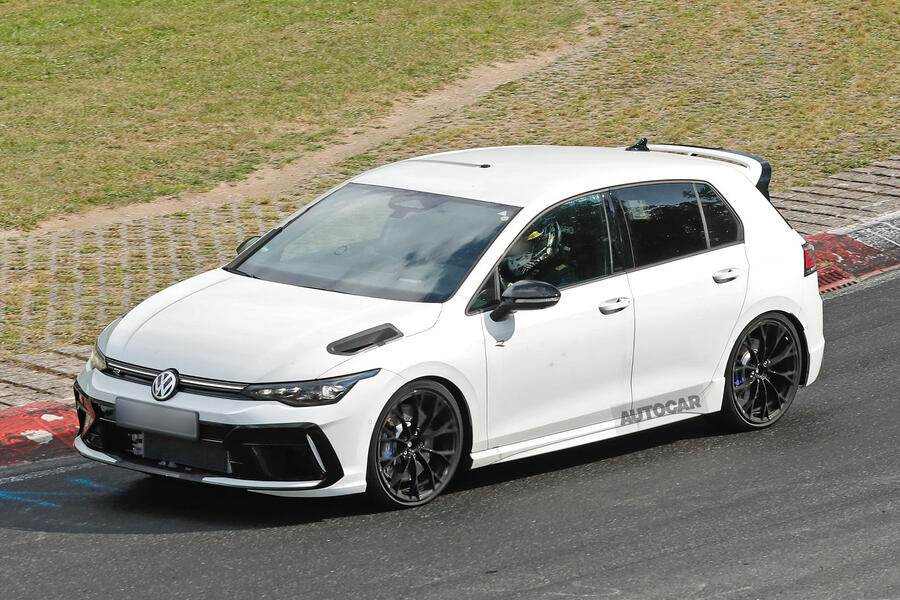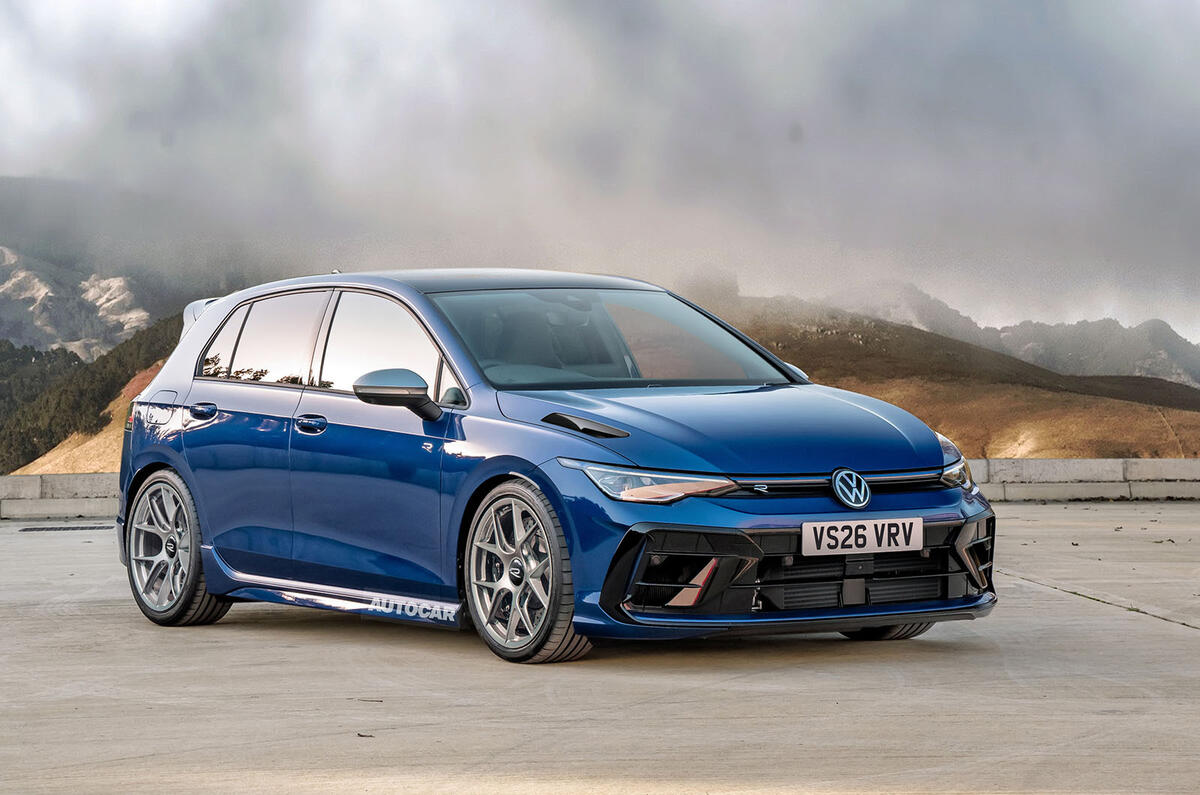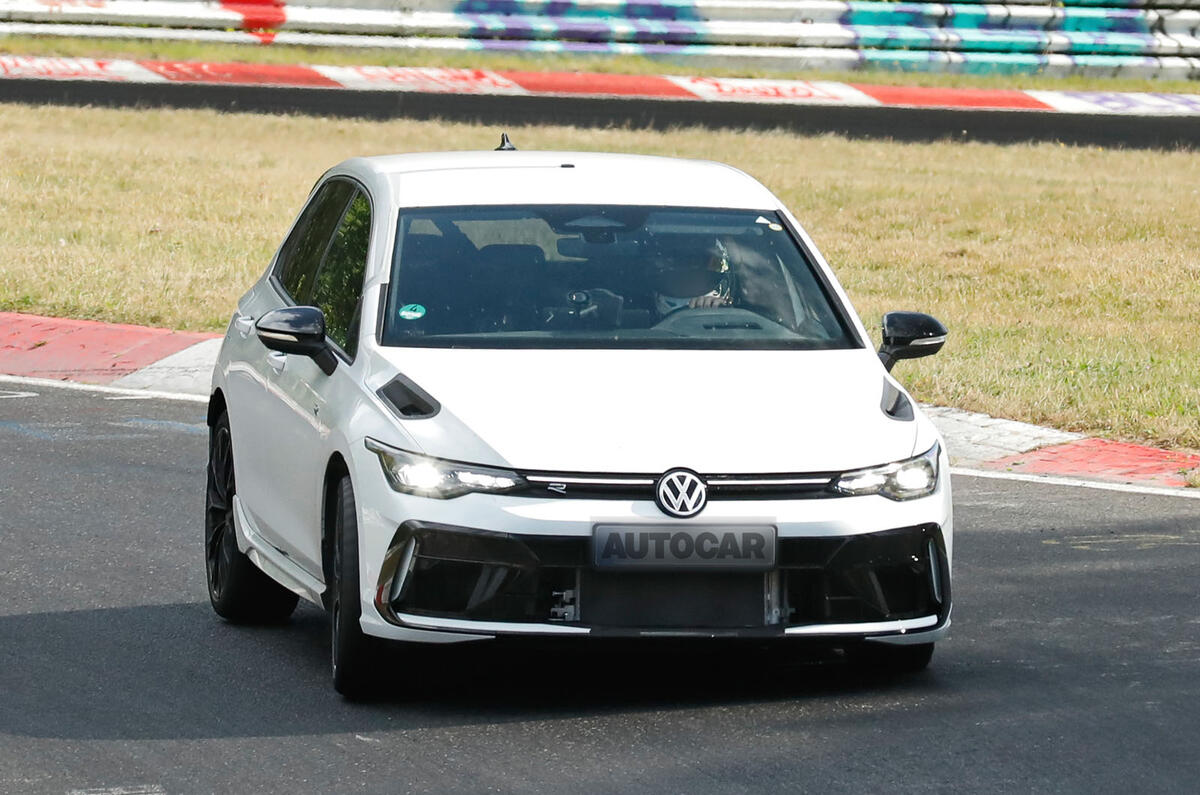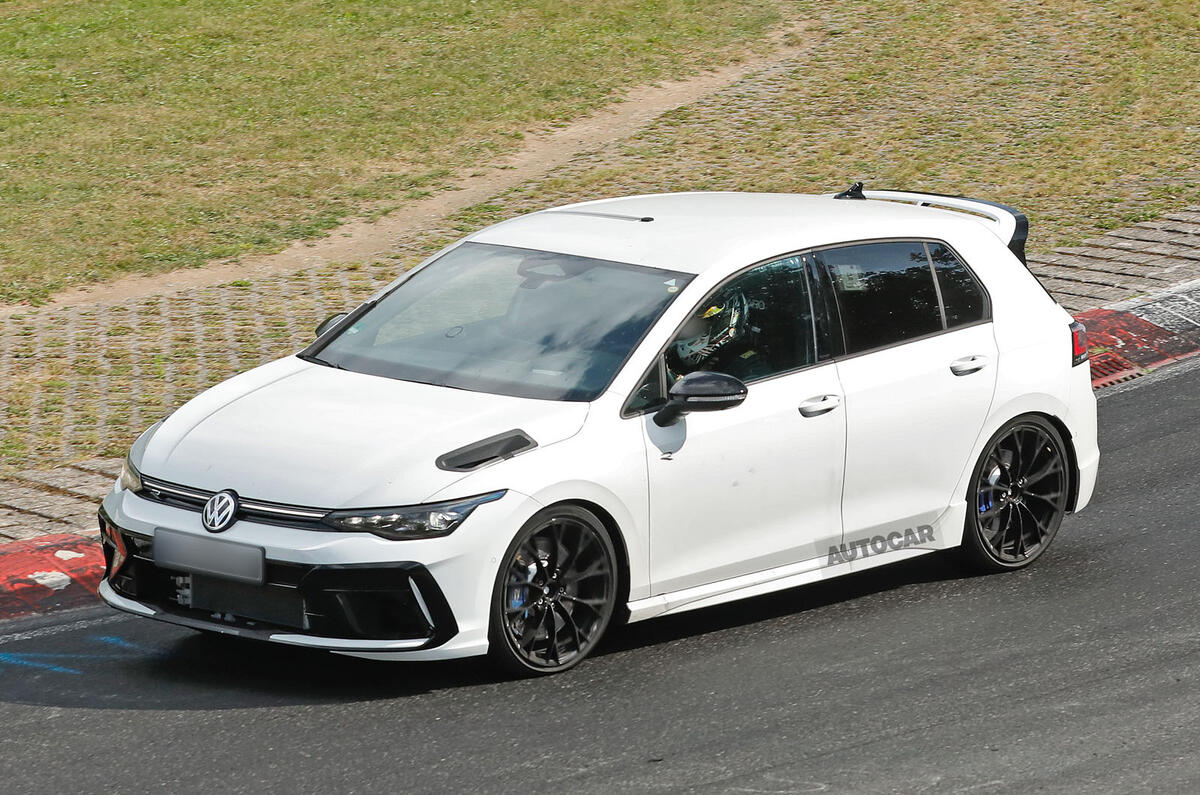Volkswagen is readying its most powerful Golf yet, with plans to fit a 25th anniversary version of the R with the same turbocharged 2.5-litre five-cylinder petrol engine used by the Audi RS3.
The model is expected to arrive in 2027 to serve as a send-off for the pure-petrol Golf before its transition to electrification. It also confirms Audi’s commitment to keeping the 'EA855' five-pot engine alive following suggestions that new emission regulations would kill it off.
With that unit fitted, the special Golf is set to mark a significant step up from the current Golf R 333. While that car uses VW’s ubiquitous 'EA888' 2.0-litre turbo petrol four, uprated to 328bhp and 295lb ft, the run-out’s 2.5-litre turbo five delivers 394bhp and 354lb ft in the current RS3.
That engine is likely to make the new R the quickest Golf to 62mph too. The RS3 can dispatch the sprint in 3.8sec whereas the R 333 completes the run in 4.6sec.
The power output could be pushed further still. Sebastian Grams, former managing director of Audi Sport, told Autocar in 2023 that “there's still a way to go” with the five-cylinder engine compared with the RS3 Performance Edition, its most potent variant to date. That car, which was launched in 2023 and limited to 300 models globally, put out 401bhp and 369lb ft.
The five-cylinder engine has become a signature feature of the RS3, so its fitment into a Golf is being hailed by Volkswagen as a significant moment. The unit is also used in other Volkswagen Group models, including the Cupra Formentor VZ5.

To keep the engine alive beyond the Euro 7 November 2026 deadline, Audi will update the unit’s hardware. Likely changes include a new particulate filter, more sensitive NOx sensors, recalibrated injection mapping and higher cell-density catalysts.










Join the debate
Add your comment
Will it have the ridiculous asymmetric tyres, with the wider rubber at the front?
VW still need to sort out the irritants of the Mk 8 R- use of touch slider controls, delving into multiple windows for basic functions, vagueness in electronic steering part way through tight bends etc to get the most from the new engine. Query will it be too heavy for the Golf R? VW, could you bite on your pride and bring back nobs & buttons for the basic functions? (The Chinese manufacturers have and they seem to be doing ok ...)
I had a Mk 7 then then the old RS3 (great in straight lines, not around corners) before buying a Mk 8 during Covid times - untest driven. I had it 5 months - it was unliveable for the reasons outlined above. Since I have had the M240i xdrive and latest M135 before settling back on the Mk 7.5R.
And the best of them? The Mk 7.5R is the only one that brings a smile to my face every time I drive it through the windy Suffolk lanes.